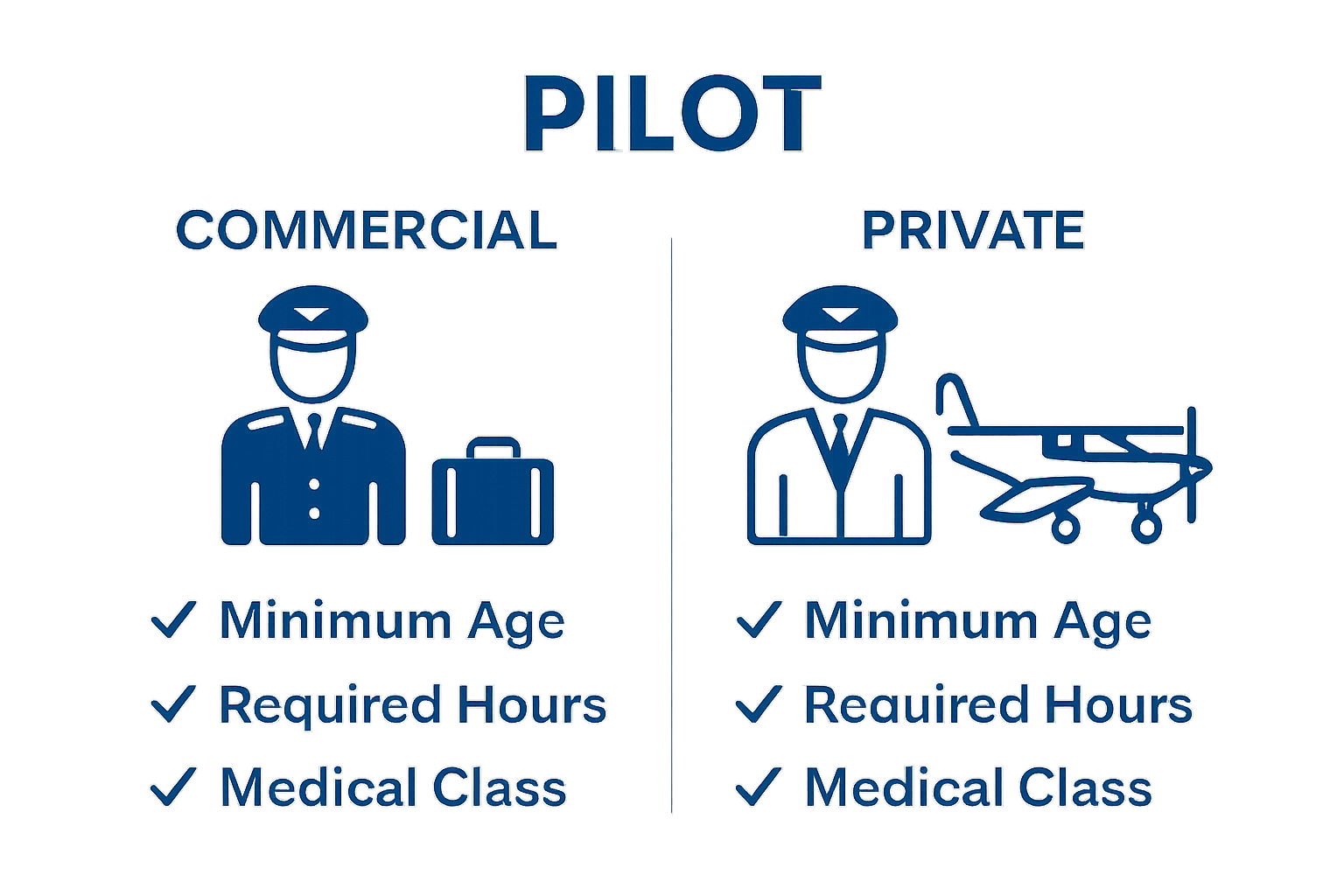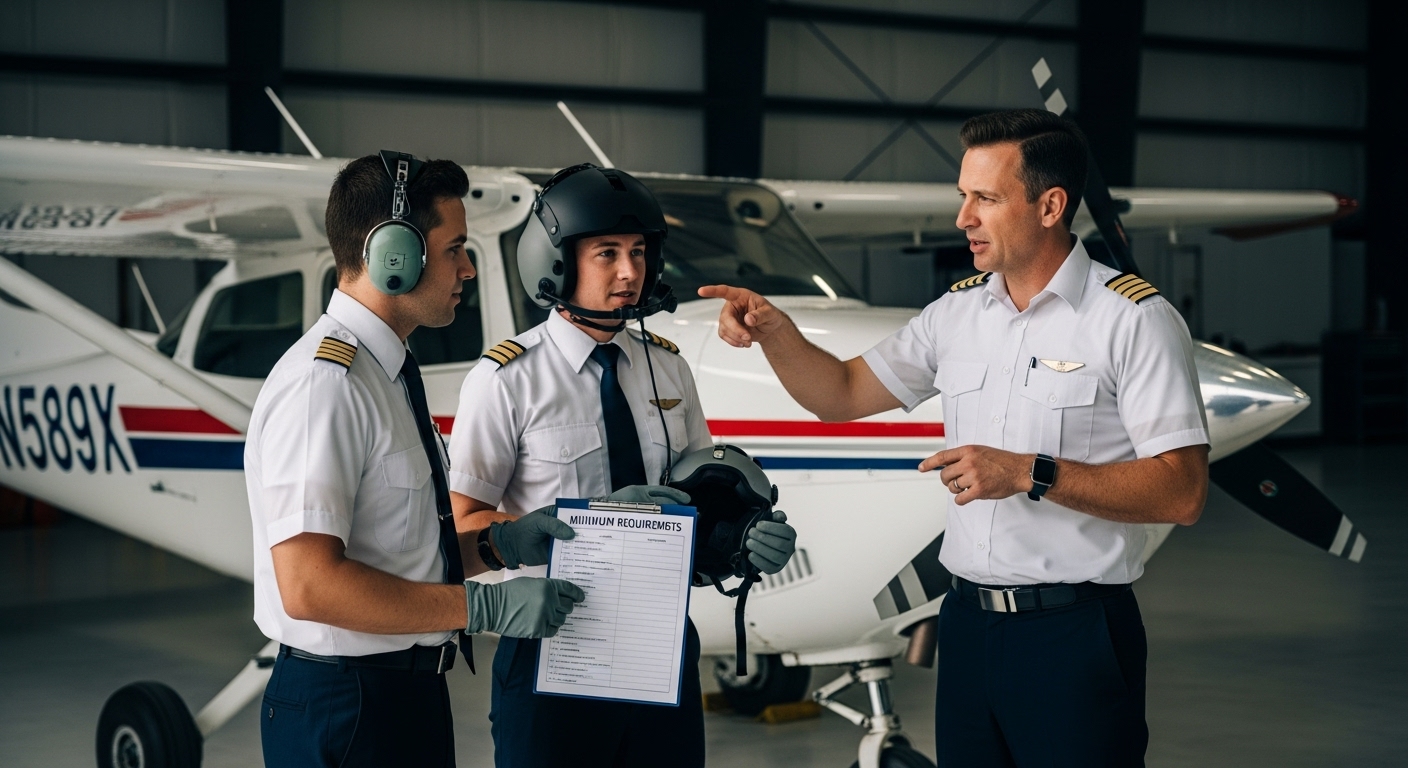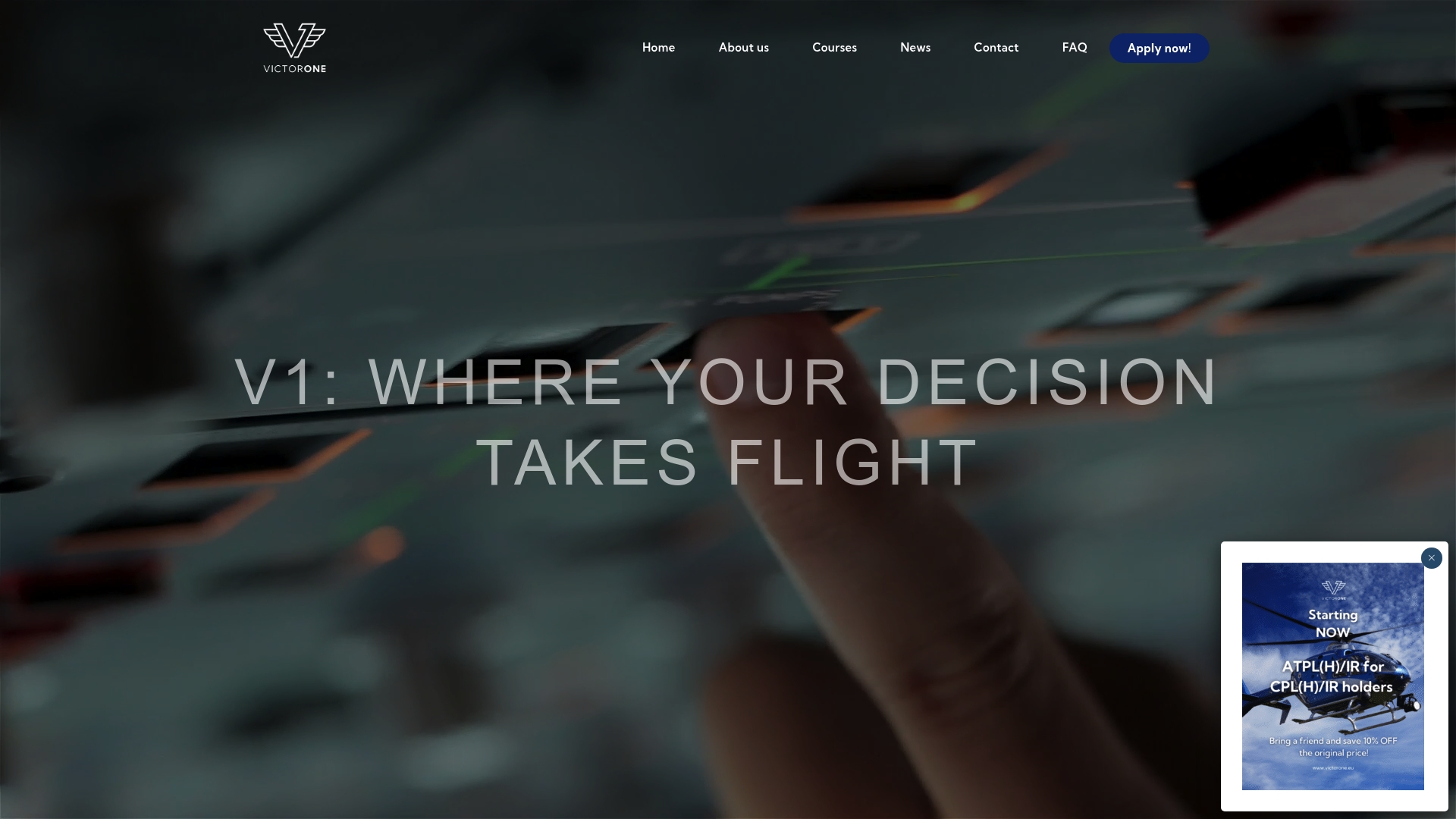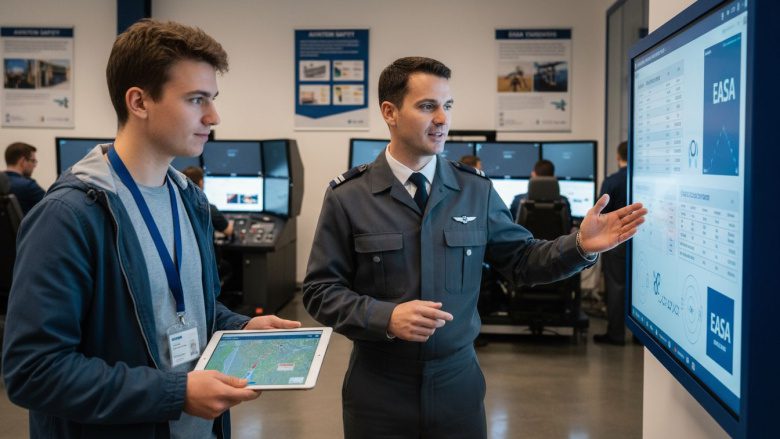A Commercial Pilot License turns passionate flyers into paid professionals. There is a remarkable detail that sets it apart from a regular licence though. Only about 1 in 20 private pilots ever go on to qualify for a commercial licence, making it much rarer and far more demanding than most expect. The real surprise is just how rigorous and transformative the journey to becoming a commercial pilot actually is.
Table of Contents
- What Is A Commercial Pilot License?
- Why Commercial Pilot License Requirements Matter
- Key Concepts In Commercial Pilot Licensing
- The Pathway To Obtaining A Commercial Pilot License
Quick Summary
| Takeaway | Explanation |
|---|---|
| Commercial Pilot License enables paid flying | A CPL allows pilots to earn money by operating aircraft commercially, unlike a private license. |
| Rigorously regulated for safety and competence | CPL requirements ensure pilots are adequately trained and medically fit, promoting higher safety standards in aviation. |
| Theoretical and practical training are essential | Candidates must undergo extensive theoretical education and practical flying assessments to obtain a CPL. |
| Pursuing additional ratings enhances employability | Many CPL holders seek further qualifications, like instrument or multi-engine ratings, to improve job prospects in aviation. |
| Initial requirements must be met first | Aspiring pilots must meet minimum age, medical certifications, and hold a Private Pilot License before starting the CPL training process. |
What is a Commercial Pilot License?
A Commercial Pilot License (CPL) represents a critical professional certification in aviation that enables pilots to earn money by flying aircraft commercially. Unlike a private pilot license which restricts flying to personal or recreational purposes, a CPL opens professional career pathways in aviation.
Below is a summary table contrasting the main features and qualification aspects of a Private Pilot Licence (PPL) with those of a Commercial Pilot Licence (CPL), clarifying key differences for aspiring pilots.
| Feature / Requirement | Private Pilot Licence (PPL) | Commercial Pilot Licence (CPL) |
|---|---|---|
| Permits Paid Flying | No – non-commercial/personal use only | Yes – allows earning money by flying commercially |
| Minimum Age | Usually 17 years | 18 years |
| Medical Certificate | Class 2 medical | Class 1 medical |
| Training Intensity | Less intensive practical and theory requirements | Extensive theory and practical training |
| Career Opportunities | Recreational flying, limited private activities | Professional aviation careers, airline and charter companies |
| Additional Ratings Required | Optional | Often pursued to enhance employability (e.g. Instrument, Multi-Engine) |
| Regulatory Body | National authority | EASA (in Europe) or national, international recognition |

Professional Aviation Qualification
The Commercial Pilot License is an internationally recognised qualification regulated by the European Union Aviation Safety Agency (EASA). It signifies that a pilot has achieved a professional standard of theoretical knowledge and practical flying skills necessary for commercial operations. Obtaining this licence demonstrates a pilot’s competence to safely operate aircraft in complex and demanding professional environments.
Key characteristics of a Commercial Pilot License include:
- Permits flying for financial compensation
- Requires extensive theoretical and practical training
- Mandates higher medical and skill standards compared to private licenses
- Enables career opportunities with airlines, charter companies, and other commercial aviation sectors
Legal and Professional Requirements
To obtain a Commercial Pilot License, candidates must meet rigorous standards set by aviation authorities. According to EASA regulations, this involves completing comprehensive theoretical knowledge exams, accumulating specific flight hours, and demonstrating advanced flying proficiencies.
The CPL serves as a foundational professional qualification that positions pilots for advanced career progression. While it represents a significant achievement, many pilots subsequently pursue additional ratings like instrument rating (IR) or multi-engine privileges to enhance their professional marketability in the competitive aviation industry.
Why Commercial Pilot License Requirements Matter
Commercial pilot license requirements are not arbitrary bureaucratic rules but critical safety protocols designed to protect passengers, crew, and the broader aviation ecosystem. These stringent standards ensure that only highly qualified professionals operate complex aircraft in challenging environments.
Safety and Risk Management
The primary purpose of commercial pilot license requirements is to maintain the highest possible safety standards in aviation. According to EASA safety reports, comprehensive licensing requirements directly correlate with reducing aviation incidents and accidents. These regulations mandate rigorous training, medical assessments, and continuous skill verification to mitigate potential human error risks.
Key safety considerations in commercial pilot licensing include:
- Comprehensive theoretical and practical examinations
- Regular medical fitness assessments
- Mandatory recurrent training and skill checks
- Systematic evaluation of decision making under pressure
Professional Competence and Industry Standardisation
Commercial pilot license requirements create a standardised framework of professional competence across the aviation industry. This standardisation ensures that pilots from different training backgrounds meet consistent performance criteria, which is crucial for international flight operations. Airlines and aviation employers rely on these stringent requirements to assess a pilot’s capability to operate aircraft safely and efficiently.
By establishing clear, measurable standards, these requirements protect not just individual passengers but entire aviation ecosystems. They create a structured pathway for professional development, ensuring that only truly qualified individuals are entrusted with the significant responsibility of commercial flight operations.
Key Concepts in Commercial Pilot Licensing
Commercial pilot licensing involves a complex framework of theoretical knowledge, practical skills, and regulatory compliance. Understanding these key concepts is crucial for aspiring professional pilots navigating their career pathway in aviation.
Theoretical Knowledge Foundation
According to EASA licensing regulations, commercial pilot training encompasses a comprehensive theoretical curriculum designed to build a robust understanding of aviation principles. This theoretical foundation covers critical domains that ensure pilots can operate aircraft safely and professionally.
Key theoretical knowledge areas include:
- Air law and aviation regulations
- Aircraft technical systems and performance
- Navigation and flight planning
- Meteorological principles and weather interpretation
- Human performance and limitations
- Communication protocols and procedures
Practical Skill Development
Beyond theoretical understanding, commercial pilot licensing demands demonstrable practical flying skills. Pilots must prove their ability to handle complex aircraft systems, make critical decisions under pressure, and execute precise flight manoeuvres across various operational scenarios.
The practical skill assessment typically evaluates a pilot’s proficiency in:
- Precise aircraft handling techniques
- Emergency procedure management
- Instrument flight capabilities
- Cross country navigation execution
- Complex flight scenario problem solving
These comprehensive requirements ensure that commercial pilots are not just technically competent but also possess the judgment, adaptability, and professional demeanour necessary for safe and efficient aviation operations.
The Pathway to Obtaining a Commercial Pilot License
Obtaining a Commercial Pilot License represents a structured and comprehensive journey that demands significant dedication, technical skill, and professional commitment. This pathway transforms aspiring aviators into certified commercial pilots through a rigorous and systematic process.
Foundational Training Requirements
According to EASA licensing regulations, the pathway begins with meeting critical preliminary requirements. Candidates must first establish a solid foundation that demonstrates their potential for professional aviation.
Key initial requirements include:

- Minimum age of 18 years
- Valid Class 1 medical certificate
- Private Pilot License (PPL) as a prerequisite
- Demonstrated English language proficiency
- Sound physical and mental fitness
Training and Certification Stages
The commercial pilot licensing pathway involves multiple progressive stages that comprehensively assess a candidate’s theoretical knowledge and practical flying capabilities.
These stages are meticulously designed to ensure that only truly qualified professionals enter commercial aviation.
The primary stages of commercial pilot training encompass:
- Theoretical knowledge instruction across multiple aviation domains
- Comprehensive ground school education
- Structured flight training with minimum hour requirements
- Advanced instrument rating preparation
- Skill test and practical examination with an authorized examiner
Successfully navigating this pathway requires unwavering commitment, continuous learning, and a genuine passion for aviation. Each stage builds upon the previous one, gradually transforming theoretical understanding into practical professional competence.
This table presents a clear overview of the typical stages in the Commercial Pilot Licence (CPL) training pathway, helping candidates visualise the progression to professional qualification.
| Stage | Description |
|---|---|
| Foundational Entry Requirements | Meet age, medical, English proficiency, and hold PPL |
| Theoretical Knowledge Instruction | Classroom or online study covering core aviation subjects |
| Ground School Education | Structured preparation for theoretical knowledge examinations |
| Flight Training | Accumulate required practical flying hours and skill development |
| Advanced Instrument Rating Preparation | Training focused on handling aircraft with instrument references |
| Skill Test and Examination | Practical and oral assessment with an authorised examiner |
| Qualification Award | Issuance of CPL upon successful completion of all stages |
Turn Your Commercial Pilot Aspirations Into Reality with VictorOne.eu
Do you feel overwhelmed by the strict EASA commercial pilot licence requirements? You’re not alone. Many aspiring pilots find the pathway confusing and feel unsure about meeting theoretical knowledge standards or keeping up with essential training milestones. You want to build the solid aviation knowledge needed for success, but traditional ground schools may not fit your schedule or lifestyle.
VictorOne.eu removes these barriers. Our platform provides internationally recognised, EASA-approved pilot theory courses, curated by industry specialists. You can access online materials, interactive question banks, and expert consultations anytime, anywhere. With our fully digital resources, you can tackle complex subjects like air law, technical systems, and instrument proficiency on your terms.

If you are serious about becoming a commercial pilot, now is the perfect moment to start. Choose a training provider who understands the career journey and supports your learning at every stage. Explore comprehensive aviation pilot licensing courses and unlock your professional future today. Join VictorOne.eu and benefit from flexible, high-quality education that fits around your life. Book your place now and move one step closer to the cockpit.
Frequently Asked Questions
What is a Commercial Pilot License (CPL)?
A Commercial Pilot License (CPL) is a professional certification that allows pilots to earn money by flying aircraft for commercial purposes, distinguishing it from a private pilot license.
What are the requirements to obtain a Commercial Pilot License?
To obtain a CPL, candidates must meet specific criteria including a minimum age of 18 years, a valid Class 1 medical certificate, a Private Pilot License (PPL), and proficiency in the English language, alongside completing rigorous theoretical exams and flight training.
Why are Commercial Pilot License requirements important?
CPL requirements ensure safety and professional competence in aviation. They maintain high standards for training, medical fitness, and skill verification to protect passengers and the aviation industry overall.
How long does it take to obtain a Commercial Pilot License?
The duration to obtain a CPL can vary but generally requires several months of dedicated training, including theoretical study and practical flight hours, which is often accumulatively around 150 hours of flying experience, depending on the training program.

